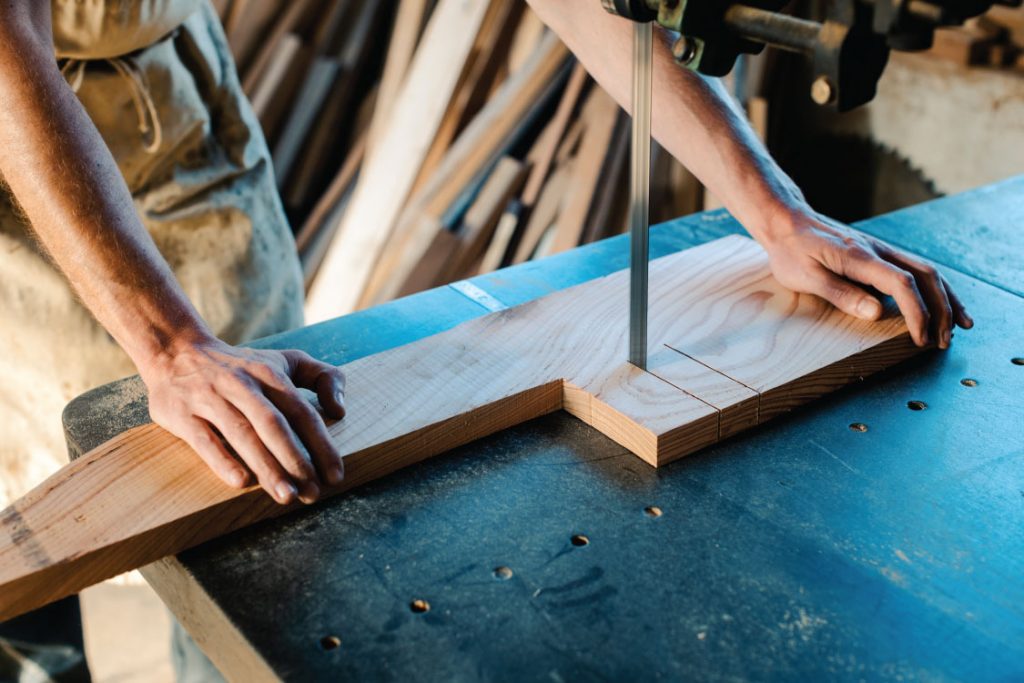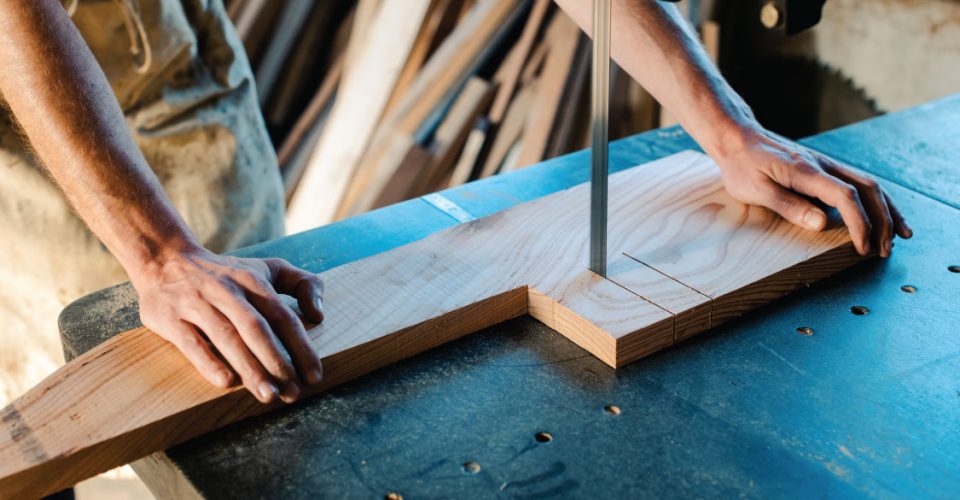Prevent the Dreaded Kerchunk: Six Simple Bandsaw Maintenance Musts
A well-maintained bandsaw is by far the most important addition to any workshop, and is responsible for cutting precise lines in even the thickest materials. It can carve perfectly symmetrical shapes and curves with minimal effort, and has saved woodworkers from many hours of intensive labor.
In order to keep your bandsaw in perfect working order, it is essential to carry out regular cleaning and maintenance and replace any parts that become worn out. By following these six simple steps, you will ensure that your machine remains in tiptop condition, and will continue to cut perfectly straight lines every time.

Perform Regular Cleaning
As with any high performance machine, it is essential to remove any dust, grime, and build-up in order to allow all the different components to function correctly. Start by removing the wheel covers and blade. Clean any tough dirt or grime from the inside of the machine using a stiff-bristled brush.
Then vacuum up all the loose wood shavings and wipe down the wheels and tires using a gentle cleaning solvent and warm water. It is also important to remember to clean the vents to allow proper airflow.
Check for Worn-out Tires, Belts and Pulleys
When checking the tires for wear and tear, it is important to ensure that each tire is slightly raised along the centre, as this will help to keep the blade in place during use.
Check for any cracks or signs of stress, and if necessary replace the tire immediately. As you examine the belt and pulley for any splits or frayed edges, turn the lower wheel by hand to check that it rotates smoothly. Check the tension and alignment of the belt and adjust if necessary.
Adjust Blade Tension and Tracking
Select a ¼ inch wide blade, and retract the blade guard up as far as it will go and remove the guide blocks. Wearing protective clothing, carefully slide the blade onto the wheels ensuring that it is centred on the tires.
Now increase the blade tension until you see the blade begin to straighten out, but avoid over tightening as this can lead to problems later on. Spin the wheels slowly by hand and adjust the tracking until the blade is fully centred on the tires.
Replace the wheel covers and turn the machine on. Perform any final adjustments, and once you are satisfied with the position of the blade, lock the tracking adjustment firmly in place.
Check the Wheel Alignment
In order to ensure that the blade cuts clean, precise lines through any type of material, it is important to check that the wheels are fully aligned with each other. The belt that connects the wheels should hang in a perfect vertical line on each side, and you can confirm this by using a spirit level. Use a straight edge to check if the wheels are coplanar with each other, and perform any adjustments if necessary.
Adjust the Guides
Remove the guide blocks from their assemblies, and check for any signs of wear and tear. If they show deep lines and grooves, file them down until they are smooth using a metal file, or simply turn them and use the opposite side.
The guide blocks are responsible for keeping the blade from twisting whilst in use, so it is important to make sure that they are in good condition.
Replace the guide blocks in the upper and lower assemblies, and adjust the thrust bearings. It is important to readjust the guides every time you replace a blade.
Set the Table Angle
The final step in ensuring your bandsaw remains in perfect working condition is to check that the tabletop is square with the blade. Place a setsquare on the table and check that the side lines up correctly with the blade. If not, readjust the tabletop until it matches perfectly, and then lock it into place using the knobs at either side of the table.
As long as you perform regular tune-ups and adjustments, your bandsaw will continue to function like new for many years. Routine maintenance is not only essential for the life of your machine, but also for the safety of you and anyone else using it.
Another way to protect your machine is to treat all the unpainted metal surfaces with a rust preventative which can be purchased from any hardware store. It is also advisable to release any tension on the blade when the machine is not in use, as this can create extra wear and tear on the tires.
A good bandsaw is an essential piece of machinery and will stand up to the toughest jobs as long as you keep it well-maintained and utilise great bandsaw blades.

